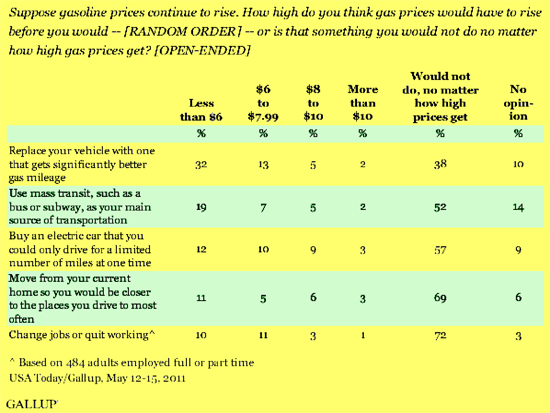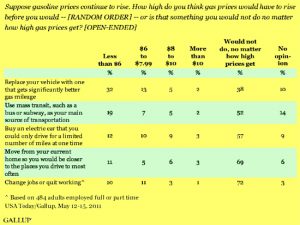
 A recently released poll from Gallup, the widely respected public opinion research firm, surveyed fuel prices and the effects of the increased costs but failed to ask a single question about motorcoach travel.
A recently released poll from Gallup, the widely respected public opinion research firm, surveyed fuel prices and the effects of the increased costs but failed to ask a single question about motorcoach travel.
With fuel prices approaching $5 per gallon in some areas, exceeding the more than $4 per gallon threshold that stung motorists in summer 2008, Gallup surveyed the mood of the American public as Memorial Day weekend signaled the beginning of the summer leisure travel season.
The poll, released May 23, bore the headline: High U.S. gas prices may make many get fuel-efficient cars.
Too bad the headline didn’t read: High gas prices driving motorists to leave the SUV at home and take the bus. Such a headline, however, would have required Gallup to add at least one question about motorcoaches to the list of questions below — the basis for its conclusions:
This poll could have easily asked if the person would consider taking an affordable and convenient, luxury motorcoach loaded with modern amenities. While high diesel fuel prices are cutting into operators already slim margins, as well as increasing their cost of doing business, motorcoach operators have an opportunity to spin the increase in gas prices. Motorcoach operators can’t control fuel prices, but they can devise strategies to make the high gasoline prices work in their favor.
The high price of gas is finally beginning to cause Americans to reconsider driving their cars everywhere. If Gallup’s limited sample size serves as a microcosm of the people’s pulse, travelers want more options in addition to planes, trains and automobiles.
Motorcoach operators do all they can to reach out to new customers, looking for a way to escape high gas prices, high intercity rail fares and airline hassles. Many may be trying the modern motorcoach travel experience for the first time in a long, long time. This is the chance to tap into and solidify a whole new market.
Where is the motorcoach solution? Don’t ask Gallup. The only mention of a bus is in the context of intracity transit; no recognition of intercity scheduled coach service, over-the-road buses, and charter and tour options.
Although fuel prices are a ghastly hardship on operators, they arrive with the potential to spike new motorcoach ridership. Once a company hits that magic number of new riders to create critical mass, it can more than make up in new customers what it spends to fill each tank.
New traveler segments will come to the motorcoach because of gas prices. It’s up to operators to make sure they stay on motorcoaches because of service. BR
Eron Shosteck serves as president & CEO of The Media Consultant Group, Alexandria, VA, a marketing and communications firm specializing in transportation.

Great points and insight! What will it take to move buses into the conversation?